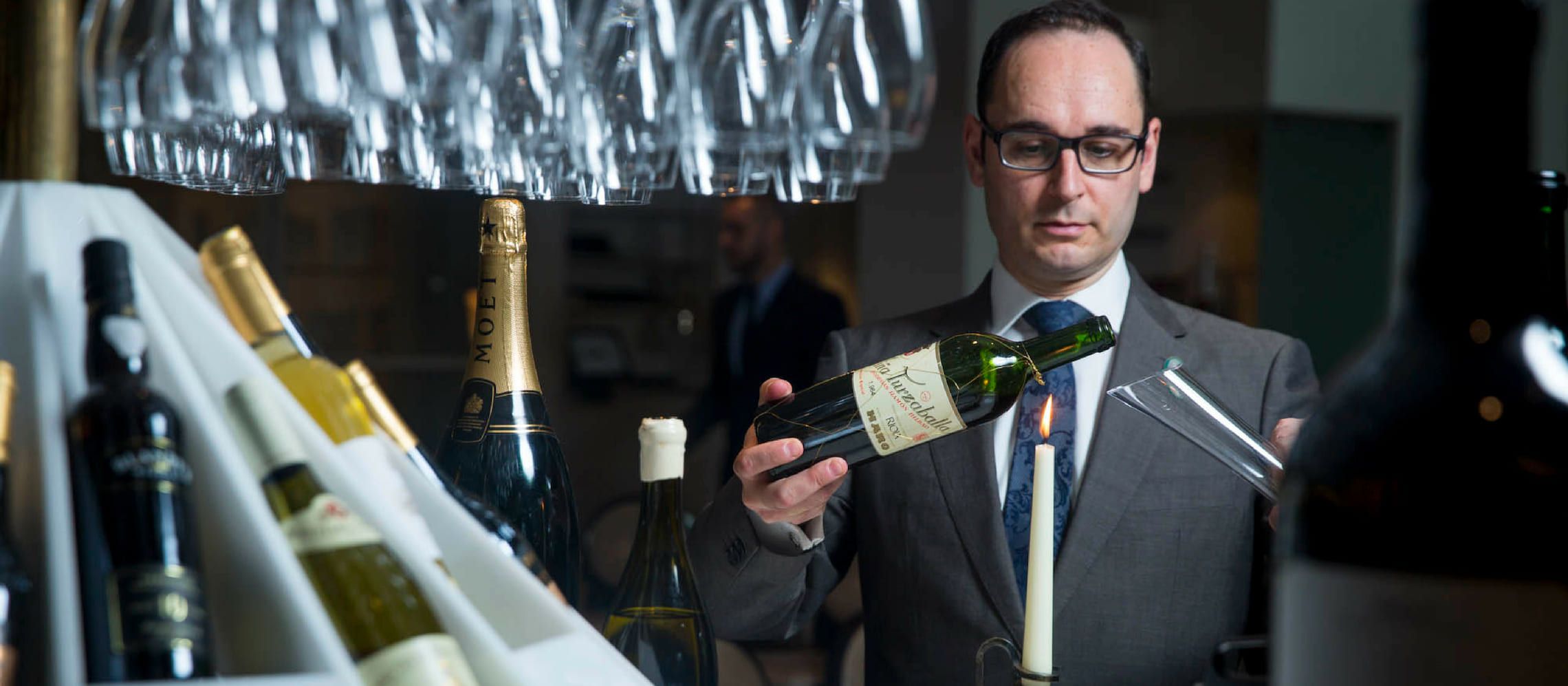Registration Opens
1 May 2024
Judging
Date
24 & 25 March 2025
Winners Announcement
22 April 2025

At Avenue, a modern American brasserie in London, Augustin Trapero focuses on Bordeaux and Burgundy - whilst also keeping one eye on the wine of his native land, Spain
Avenue serves American food; the culinary approach at this Mayfair restaurant evokes a modern Manhattan brasserie. The wine list, though, is different. “It's more classic,” says head sommelier Agustin Trapero. “Because although Avenue is a kind of American-style Manhattan thing, the wine list is European because we're in the middle of in Mayfair.
“In Mayfair, we have a lot of corporate people, we have a lot of [people with] classic British palates, so they really like Bordeaux, they like Burgundy, they really like those kind of old, traditional, classic appellations. So the selection for the New World is quite small to be honest.”
It’s a useful reminder that customer demand often trumps concept. There are some American wines on the list, though: from Napa, Sonoma, a few from Anderson and Paso Robles - so who’s drinking them? “American customers,” says Trapero. “From time to time we have a British person who is happy to taste something from California, but to be honest, most of the California that we sell is for American people.”
Trapero is phlegmatic about this, perhaps because of his weight of experience. Born and brought in a part of Spain called El Tiemblo which is known for its ancient Garnacha vines, he decided to make his career in wine after coming to London in 2001. Since then he has worked at a variety of restaurants across the British capital before arriving at Avenue in 2016.
It’s an interesting challenge for a sommelier. Before, he worked at the more classically-inclined, Michelin-starred Launceston Place - but now he works with a menu that runs the gamut from burger to rack of lamb via confit salmon and filet mignon. It’s a meat-heavy menu, full of comfortable if delicious options rather than culinary creations. Trapero clearly relishes it. What would he recommend to go with the burger?
“We have several options,” he says. “I normally recommend, if it's by the glass, that the customer goes for a lovely Sateau Gasqueton 2011 from Saint-Estephe. It goes very well with a burger; it's full-bodied, it's spicy, it has long legs.”
Brunch is also a big part of Avenue’s offer, although it doesn’t necessarily require much work from Trapero. “We have a lot of people coming in for brunches - but the brunch includes unlimited prosecco,” he says. “So, the wine list is available, you can have whatever you wish, but 95 per cent of people goes for the unlimited prosecco, so it's basically prosecco all day.”
At other times, though, he’s more in demand. There are some matches that he’s delighted to suggest, he says. “We have a pork belly dish on the menu and, at the moment by the glass, I'm doing a Riesling from Washington State, from Chateau Ste Michelle in Puget Sound. It's an off-dry Riesling, so I really like the combination. You've got a kind of baked apple, green apple, a bit of tangerine and clementines with a little bit of sweetness of the wine. Actually when you serve it with the pork it makes everything balanced and very tasty, as the pork is a little bit of candied flavors, as well.
“We have very classic combinations, as well. We have lobster salad, for which I recommend our house sparkling wine, Quarter, which is from the Anderson Valley; the freshness and the high acidity with the seafood is very classic.”
Trapero’s favourite region is Burgundy (“It’s a step up from the others,” he says) but he’s taking a new interest in the wine from his native land. “Finally we are doing something right regarding wine there [in Spain],” he says.
“In the seventies and eighties, the producers started to plant international grape varieties all over Spain. They thought they would sell very well abroad, but it was a bad decision, obviously, because as a sommelier, when you're looking for a wine from Spain, the last grape varietals you want to find is Cabernet Sauvignon, or Sangiovese. You're looking for more local grape varieties: Tempranillo, Garnacha, Graciano.
“Now they are putting more emphasis on local grape varieties, so places like Rías Baixas or Ribeira Sacra, they are coming-up appellations with local grape varieties, Albariño or Mencia. I suspect a bright future for Spanish wine because of this diversity, and because we have more identity.”